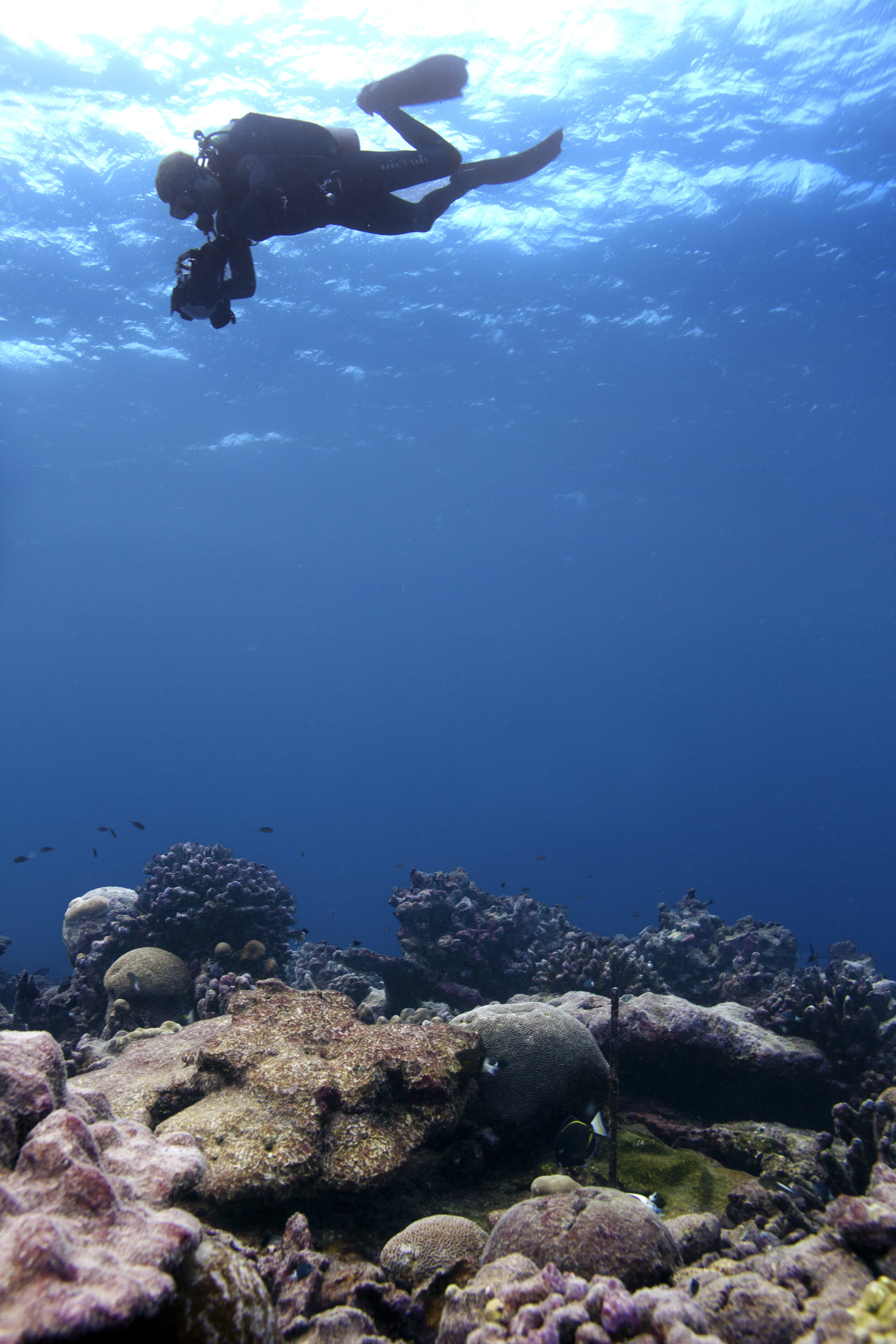
Heatwave impacts on habitat complexity
Rich and varied coral forms provide structurally complex habitat for the many fish and invertebrate species that inhabit tropical reefs. This habitat complexity underpins the ecological functioning of coral reefs. However, rising ocean temperatures and associated coral mortality threatens the structural integrity of coral reefs. Despite the increased frequency of coral bleaching events, few studies have examined changes in three-dimensional (3D) reef structural complexity following coral mortality. Working in collaboration with John Burns of the Mega Lab, we have used structure-from-motion photogrammetry to construct 3D models of permanent plots at shallow forereef sites around Kiritimati since before the El Niño.
In our first reef complexity publication, led by former MSc student Jenn Magel, we quantified the effects of severe heat stress on 3D reef habitat complexity across a gradient of local human disturbance, demonstrating that habitat complexity declined with increasing levels of human disturbance, and that there were further declines in reef habitat complexity and a loss of habitat volume within a year of the heatwave.
3D models of coral reefs on Kiritimati, showing high coral cover and structural complexity prior to the 2015-2016 heatwave…
…compared to low coral cover and structural complexity prior at sites already exposed to high levels of local anthropogenic stressors.
Following the 2015-2016 El Niño, this is what the reefs looked like in our very low local disturbance (left) and our very high disturbance (right) areas.

